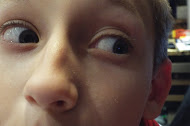The science of lying

The hit TV show,”Lie to Me” follows the fictional Dr. Cal Lightman, “the world’s leading deception expert” as he interprets body language to reveal whether a person is lying or not. Though he had a troubled past and frequent run-ins with the law, his expertise in the field of human behavior now allows him to take the lead in many crime investigations where the police or FBI have failed to unravel the mystery. Though Dr. Lightman, through years of experience, is able to pick up on an lying individual’s micro expressions and ticks in a matter of minutes, how would the average person be able to spot a liar?
Dr. Leanne ten Brinke, a real life forensic psychologist believes so. Recent research shows that the unconscious mind tends to pick up on possibly untruthful statements better than the conscious mind. While humans rank in at best a 54% accuracy rate at determining between a truth and a lie in Dr. Brinke’s trials, a separate experiment which hooked participants up to the Implicit Association Test, which tracks reaction time, found different results. Individuals seemingly had “automatic instincts” to associate words lie “untruthful” and “deceptive” with “suspects” in a mock-crime interview who were actually lying.
So perhaps human have an innate ability to determine deception. But there are still many typical signs people are told to look out for. A major one is the theory that someone looking to the right indicates dishonesty, while looking to the left indicates the person is trying to remember a fact or memory.
But how accurate is this so-called telltale sign?
Not very, say researchers, who conducted an experiment that determined eye movement has no correlation with whether someone is lying or not. Two groups of volunteers engaged in this experiment, with the first group recording themselves telling the truth or a lie, while the second group watched these recordings and tried to determine the validity of their statements.
Another part of this experiment tracked the eye direction of press conferences for alleged victims of crimes or family members missing a loved one, with some of these people later known to be lying. Neither of these conducted trials confirmed any legitimacy to the idea of eye movement being tied to lying.
Other often cited indication include the absence of the pronoun “I”, too many details, and repeating phrases over and over.
By not using personal pronouns while telling a lie, the person is able to remove themselves from the story,
Providing too many seemingly insignificant information is also a possible sign, as it is an attempt to conceal deception by throwing in details in order to make it more believable.
“Liars often talk a lot because they are hoping that, with all their talking and seeming openness, others will believe them,” Dr. Lillian Glass, a behavior specialist who has worked with the FBI, says.
Repeating words or sentences occur because they themselves are “trying to validate the lie in their mind,” Glass says, or an attempt to buy time to gather their thoughts.
It may be helpful if people began sprouting a Pinocchio-esque nose, but unfortunately this is real life. And so-called “signs” of lying are often mere speculation or too small of an indication of possible deception, so they shouldn’t be completely trusted. The good news is that, according to Brinke’s experiments, maybe everyone should trust their gut feeling after all.
